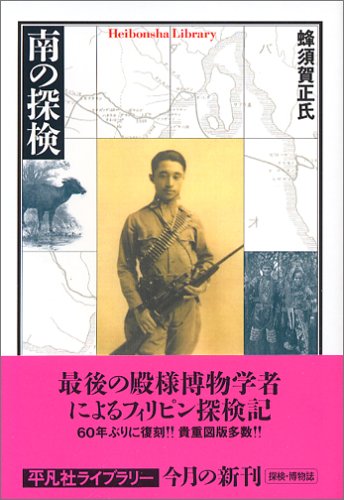6 0 0 0 OA 鳳凰とは何か (鸞其他について)
- 著者
- 蜂須賀 正氏
- 出版者
- 日本鳥学会
- 雑誌
- 鳥 (ISSN:00409480)
- 巻号頁・発行日
- vol.4, no.16-17, pp.110-120,PLI, 1924-06-15 (Released:2010-03-01)
6 0 0 0 ドド及び近縁鳥類の研究
4 0 0 0 OA ハシビロコウBalaeniceps rexGould の話
- 著者
- 蜂須賀 正氏
- 出版者
- 日本鳥学会
- 雑誌
- 鳥 (ISSN:00409480)
- 巻号頁・発行日
- vol.4, no.20, pp.375-384, 1925 (Released:2010-03-01)
1 0 0 0 キタアチジは存在せず
- 著者
- 蜂須賀 正氏
- 出版者
- 日本鳥学会
- 雑誌
- 鳥 (ISSN:00409480)
- 巻号頁・発行日
- vol.4, no.19, pp.297-298, 1925
1 0 0 0 鳥類に見られる突變化種の説明(口繪第八圖版附)
- 著者
- 蜂須賀 正氏
- 出版者
- 日本鳥学会
- 雑誌
- 鳥 (ISSN:00409480)
- 巻号頁・発行日
- vol.5, no.25, pp.411-418_1, 1928
1 0 0 0 ノトーニスの雛
- 著者
- 蜂須賀 正氏
- 出版者
- 日本鳥学会
- 雑誌
- 鳥 (ISSN:00409480)
- 巻号頁・発行日
- vol.13, no.61, pp.24-28, 1952
A rare photograph of two weeks old <b>Notornis</b> of New Zealand is reproduced from a newspaper. <b>Notornis</b> is closely related to <b>Porphyrio</b> and New Zealand has <b>P. poliocephalus melanotus</b> which underwent the same type of evolution as <b>Notornis</b>, only not to that extreme degree. The origin of these two related birds is explained throguh the theory of double invasions. The author believes that species has a termination to its long continued life and <b>Notornis</b> is considered to be a waning species. Like ontogeny is a short repetition of phylogeny, a life of an adult individual is considered as a concise picture of a species it belongs and which one day must reach the end of its specific life.
1 0 0 0 ツバメチドリの記録
- 著者
- 蜂須賀 正氏
- 出版者
- 日本鳥学会
- 雑誌
- 鳥 (ISSN:00409480)
- 巻号頁・発行日
- vol.13, no.62, pp.52-55, 1953
1 0 0 0 アイスランド産鳥類
- 著者
- 蜂須賀 正氏
- 出版者
- 日本鳥学会
- 雑誌
- 鳥 (ISSN:00409480)
- 巻号頁・発行日
- vol.6, no.29, pp.275-293, 1930
1 0 0 0 ヤマドリの近似屬に就て(口繪第四圖版附)
- 著者
- 蜂須賀 正氏
- 出版者
- 日本鳥学会
- 雑誌
- 鳥 (ISSN:00409480)
- 巻号頁・発行日
- vol.5, no.22, pp.95-100_1, 1926
1 0 0 0 主として狩獵鳥類に見らるゝ色彩の變異
- 著者
- by Masauji Hachisuka = 蜂須賀正氏
- 出版者
- The Ornithological Society of Japan
- 巻号頁・発行日
- 1929
1 0 0 0 蜂須賀山鶏に就て(第7圖版附)
- 著者
- 蜂須賀 正氏
- 出版者
- 日本鳥学会
- 雑誌
- 鳥 (ISSN:00409480)
- 巻号頁・発行日
- vol.10, no.49, pp.443-445_1, 1939
1 0 0 0 英吉利国の雉類について
- 著者
- 蜂須賀 正氏
- 出版者
- 日本鳥学会
- 雑誌
- 鳥 (ISSN:00409480)
- 巻号頁・発行日
- vol.3, no.12, pp.111-119_1, 1922
1 0 0 0 コジユケイの白変について
- 著者
- 蜂須賀 正氏
- 出版者
- 日本鳥学会
- 雑誌
- 鳥 (ISSN:00409480)
- 巻号頁・発行日
- vol.13, no.61, pp.15-16_1, 1952
A partial albino of the Chinese Bamboo Pheasant was captured at Ajiro near Atami in Shizuoka Perfecture.<br>It was one of several in a fiock and others were all normal plumaged. This is probably the first albino among Genus <b>Bambusicola.</b>
1 0 0 0 オホジウイチは日本に産せず
- 著者
- 鷹司 信輔 蜂須賀 正氏
- 出版者
- 日本鳥学会
- 雑誌
- 鳥 (ISSN:00409480)
- 巻号頁・発行日
- vol.5, no.21, pp.34, 1926
1 0 0 0 再びヲガサハラマシコを論ず
- 著者
- 蜂須賀 正氏
- 出版者
- 日本鳥学会
- 雑誌
- 鳥 (ISSN:00409480)
- 巻号頁・発行日
- vol.6, no.29, pp.268-269, 1930


